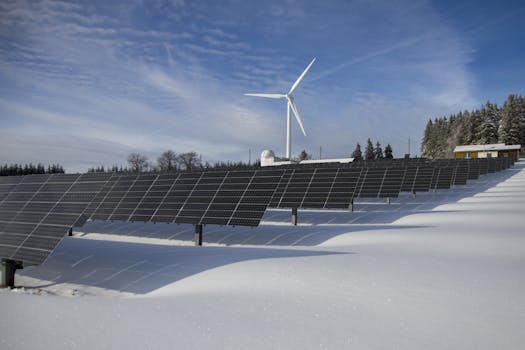Complete Guide on Monitoring the Performance of a Photovoltaic System: Monitored Parameters
As the world shifts towards renewable energy sources, photovoltaic (PV) systems have gained significant traction for their ability to convert sunlight into electricity. However, to ensure these systems operate at peak efficiency, monitoring their performance is crucial. This article provides a comprehensive guide on the key parameters to monitor in a photovoltaic system, along with insights into effective monitoring strategies.
Understanding Photovoltaic Systems
Photovoltaic systems consist of solar panels, inverters, and other components that work together to generate electricity. The efficiency of these systems can be influenced by various factors, including environmental conditions, system design, and maintenance practices. Monitoring the performance of a PV system helps identify issues early, optimize energy production, and ensure a good return on investment.
Key Parameters to Monitor
Monitoring a photovoltaic system involves tracking several critical parameters. Here are the most important ones:
- Energy Production: This is the total amount of electricity generated by the system over a specific period. It is typically measured in kilowatt-hours (kWh).
- Performance Ratio (PR): This metric indicates the efficiency of the PV system by comparing the actual energy output to the expected output under standard test conditions.
- Insolation Levels: Measuring solar irradiance (the power of solar radiation) helps assess how much sunlight the panels receive, which directly impacts energy production.
- Temperature: The temperature of the solar panels can affect their efficiency. Monitoring ambient and panel temperatures helps in understanding performance variations.
- Voltage and Current: Tracking the voltage and current output from the solar panels and inverters is essential for diagnosing electrical issues.
- System Availability: This parameter measures the uptime of the system, indicating how often it is operational versus down for maintenance or repairs.
Effective Monitoring Strategies
To effectively monitor these parameters, several strategies can be employed:
- Data Logging: Use data loggers to continuously record performance metrics. This data can be analyzed to identify trends and anomalies.
- Remote Monitoring Systems: Implementing remote monitoring solutions allows for real-time tracking of system performance from anywhere, enhancing responsiveness to issues.
- Regular Maintenance Checks: Schedule routine inspections to ensure all components are functioning correctly and to clean the panels, which can significantly improve efficiency.
- Use of Monitoring Software: Many software solutions are available that can aggregate data from various sources, providing comprehensive insights into system performance.
Case Studies and Real-World Examples
Several case studies illustrate the importance of monitoring in photovoltaic systems:
In a study conducted by the National Renewable Energy Laboratory (NREL), a PV system in California was monitored over a year. The results showed that regular monitoring helped identify a malfunctioning inverter, which, if left unchecked, would have led to a 15% loss in energy production. By addressing the issue promptly, the system maintained optimal performance.
Another example comes from a commercial solar installation in New York, where a remote monitoring system was implemented. The system allowed operators to track energy production in real-time, leading to a 20% increase in efficiency through timely maintenance and adjustments based on performance data.
Statistics on PV System Performance
According to the Solar Energy Industries Association (SEIA), the average performance ratio for well-maintained PV systems is around 75-85%. However, systems that are not monitored can experience performance ratios as low as 50%. This stark difference highlights the critical role of monitoring in maximizing energy production.
Conclusion
Monitoring the performance of a photovoltaic system is essential for ensuring its efficiency and longevity. By focusing on key parameters such as energy production, performance ratio, insolation levels, and system availability, operators can gain valuable insights into their systems. Implementing effective monitoring strategies, including data logging and remote monitoring, can lead to significant improvements in performance and energy output.
In summary, a well-monitored photovoltaic system not only enhances energy production but also contributes to the overall sustainability goals of reducing reliance on fossil fuels. As the demand for renewable energy continues to grow, investing in robust monitoring solutions will be crucial for maximizing the benefits of photovoltaic technology.
